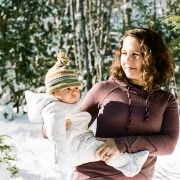A prism on a kitchen windowsill performs the miracle of fracturing sunlight into the complete spectrum, throwing rainbows on mundane surfaces, elevating them to something celestial and rare. Benjamin Taylor, in his compact and precise memoir, The Hue and Cry at Our House: A Year Remembered (Penguin, 2017), performs the same miracle. His last year of childhood in Forth Worth, TX, explodes into multicolored fragments, illuminating intersecting themes from the Kennedy assassination to Taylor’s homosexuality and eventual diagnosis of Asperger’s syndrome.
Taylor introduces us to his assimilated Jewish family via John F. Kennedy's fatal visit to Texas. In Forth Worth, before Dallas, a young Benjamin Taylor shakes the president's hand the day of assassination. It is the second blow to Taylor's youthful innocence; two years earlier, his paternal grandmother and three cousins perished in a house fire caused by a malfunctioning furnace.
The author links his family's tendency towards stoicism in the face of tragedy to JFK's watchword, vigor. The Taylors are vigorous in their determination to blot emotions out of existence. At a Jewish summer camp, Benjamin blissfully ignores how different he is from his other preadolescent bunk mates, including, in a charming cameo, future NPR host Scott Simon. He explores what he later recognizes as physical attraction to his fellow campers, most of whom he alienated with his quirky behavior. He asks, “How am I remembered by those who were there? As a photographer, yes. Also as a purveyor of beside-the-point information, a tiptoe walker, a disaster at team sports and a furtive student of bodies in the communal showers.” Taylor is merciless in his portrayal of his younger self, which only inspires more compassion and empathy in his readers.
Judaism is at once omnipresent and unseen in Taylor's childhood. Those of Benjamin’s family members who didn't leave the Russian Pale of Settlement in the early 1900s perished in the Holocaust. While Taylor asserts that he is antireligious and atheistic, he notably prefaces a list of relatives lost in the Holocaust with "Remembered for a blessing here." Judaism runs deeper than religion for Taylor, as it does for many second- and third-generation American Jews.
Both his maternal and paternal grandparents emigrated to the United States as beneficiaries of the Jewish philanthropist, Jacob Schiff, who sponsored the resettlement of Ashkenazi immigrants in atypical places, such as Galveston, TX, to distribute Jewish culture and settle Jewish people more widely in the United States.
The author remembers his maternal relatives, the Bocksteins, as being light-hearted and musically inclined, while the Taylors, née Treszczanskis, were solemn and sad. He writes, "How different was Mom's family from Dad's! The Bocksteins, so musical, dressy, pleasure-loving, and spendthrift. The Taylors, grim as Plymouth brethren. Harry and Lena Bockstein's Spanish colonial house on Windsor Place always smelled of baking pies. B. B. and Bertha Taylor's house in Tyler smelled of Lysol." With his love of music and encyclopedic knowledge of history, Taylor seems more Bockstein than Taylor.
Despite the family’s desire to be seen as distinct from their European forebears, Taylor was sent to Hebrew school.
“I certainly wasn’t there because Mom and Dad were devout,” he explains. “What they were trying to do was appease our forebears from Wolkowysk, Sielce, Pruzhany, Korycin and Goniadz. For them, the sanctified dead, I was offered up, two afternoons a week and twice more on Saturday and Sunday mornings, to Simon and Miriam Zipper.”
He recalls delighting in the torment of Mr. and Mrs. Zipper and speculates that his attendance at Hebrew school was also to make his parents feel better about their largely secular lives. Taylor describes himself as “devoutly antireligious … The sanctity of atheism has stayed with me to this day. I hope to die in the odor of it.”
Within the narrow confines of the year encapsulated in The Hue and Cry at Our House, Taylor sends the reader on an emotional ride with sharp turns, twists and jerks, and stunning vistas. From Taylor's tumor-prone arm to a doctor's attempt at "correcting" his unusual gait, from his grandmother's nephritis to his mother's dementia, from an early understanding of homosexuality to later understanding of the autism spectrum and Asperger's Syndrome, no facet of Taylor and his family's lives is left unexplored.



